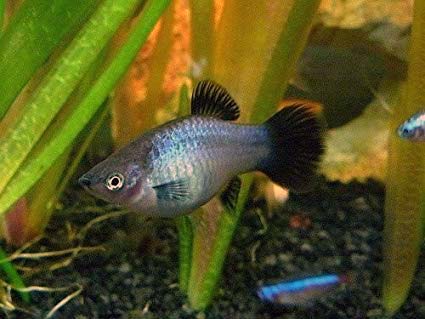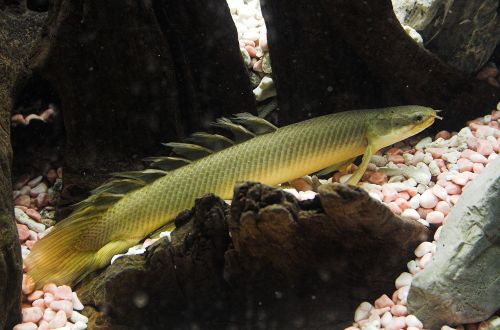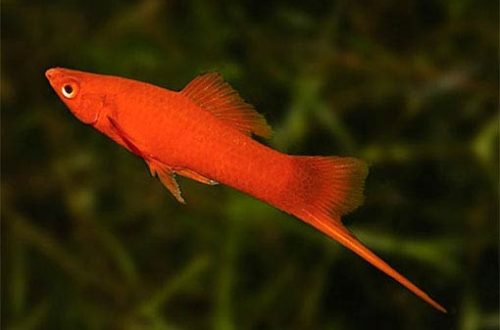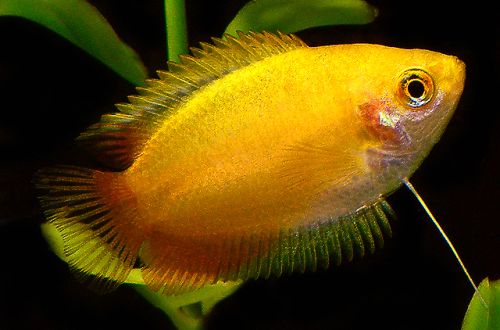
Pecilia blue
Blue platy, also known as neon platy, trade synonymous English names Platy Blue, Blue Moon Platy, Platy Neon Blue. It is a breeding variety of the usual Pecilia, does not occur in nature. A key feature of this species is the blue body coloration with iridescent neon or metallic hues. This coloring is due to the presence in the body of special cells of iridophores – one of the types of chromatophores.

This neon blue coloration can be part of the Black Tailed Pecilia, Mickey Mouse Pecilia, and several other color variations and breeds.
Brief information:
- The volume of the aquarium – from 60 liters.
- Temperature – 20-28°C
- Value pH — 7.0–8.2
- Water hardness – medium to high hardness (10-30 GH)
- Substrate type – any
- Lighting – moderate or bright
- Brackish water – acceptable at a concentration of 5-10 grams per liter of water
- Water movement – light or moderate
- The size of the fish is 5–7 cm.
- Food – any food
- Temperament – peaceful
- Content alone, in pairs or in a group
Maintenance and care

The Blue Pecilia is an excellent choice for the beginner aquarist due to its low maintenance requirements. The fish are able to successfully adapt to a wide range of pH and GH values, do not need a large aquarium, are not demanding in the choice of decoration and get along well with other species of comparable size.
For 3-4 fish, an aquarium of 50-60 liters with a large number of aquatic plants is enough. It is advisable to select unpretentious species such as Anubias and Thailand fern, as the Pecilia tend to damage the delicate parts of the plants. However, with enough food, this does not happen often.
Aquarium maintenance is standard. The minimum set of actions includes weekly replacement of part of the water with fresh water and removal of accumulated organic waste (feed leftovers, excrement).
Food. Omnivorous species. The choice of food acceptable for feeding is very wide. It can be both popular dry food and live or frozen invertebrates, such as brine shrimp, bloodworms, daphnia, mosquito larvae, etc. An important condition is that foods with herbal supplements should be included in the daily diet.
Breeding / reproduction. Like most other viviparous species, the Blue Pecilia is extremely fertile and regularly produces offspring. Reaches sexual maturity by 3-4 months. Recreating any specific conditions (changing the composition of water, diet, etc.) is not required. The incubation period lasts about 30-40 days. It is with such a frequency that a new generation of fish can appear. They eat their offspring, so fry are recommended to be transplanted into a separate tank.





